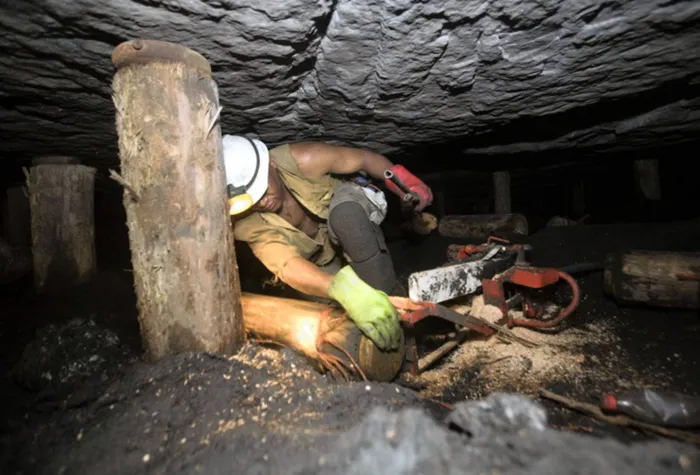Mining set to weigh on economic growth

A mineworker works at the rock face at the Impala Platinum mine in Rustenburg, South Africa, on Wednesday, June 4, 2008. Impala Platinum Holdings Ltd is the world's second-biggest platinum producer. Photographer: Nadine Hutton/Bloomberg News A mineworker works at the rock face at the Impala Platinum mine in Rustenburg, South Africa, on Wednesday, June 4, 2008. Impala Platinum Holdings Ltd is the world's second-biggest platinum producer. Photographer: Nadine Hutton/Bloomberg News
Johannesburg - The latest drop in mining output was likely to again have weighed on economic growth in last year’s fourth quarter, analysts said yesterday.
On a seasonally-adjusted basis, the volume of mining production in the three months ended November when compared with the three months ended August fell by 3.1 percent, Statistics SA said in its latest mining production and sales report yesterday.
“The annualised version of this measure (mining production) is used to estimate gross domestic production (GDP). Therefore, at minus 11.8 percent quarter on quarter, seasonally adjusted and annualised, the figure indicates that the mining sector will detract from GDP, as was the case in the second quarter of 2015 and the third quarter of 2015,” Investec economist Kamilla Kaplan wrote in a note yesterday.
“Mining sector activity has been dampened by subdued demand, particularly for industrial commodities from major commodity importing countries, such as China,” she wrote.
Rebound unlikely
“The extent of slowing of the Chinese economy is a key risk to the domestic mining industry,” Kaplan added.
Isaac Matshego, a Nedbank economist, said he expected the trend of weak mining production to continue and there was unlikely to be a strong rebound in output this year.
He said a key concern was the upcoming wage negations in the platinum sector.
“The platinum sector is in a very tough place right now. The wage negotiations are not going to be easy,” he added.
“Aside from the global headwinds confronting the local mining sector, labour unrest that disrupts production is a risk,” Kaplan said.
In November, local mining production fell by 0.8 percent year on year, StatsSA said.
“It does seem that the low base created by the 2014 platinum miners’ strike has finally worked itself through the numbers as this is the third consecutive monthly decline in annual mining production after rather robust mining production growth numbers earlier in 2015,” Nedbank economists Dennis Dykes and Busisiwe Radebe wrote in a note.
“The largest negative contributions were recorded for iron ore (down 20.4 percent), ‘other’ metallic minerals (down 35 percent) and manganese ore (down 14.7 percent),” StatsSA added in its report.
On the other hand, Platinum group metals (PGMs) rose 24.9 percent.
South Africa’s mineral sales were R33.2 billion in November, which brought total minerals sales for the 11 months ended November to R323.6bn.
The country’s top contributor to mineral sales in November was coal, with sales of R9.3bn, followed by PGMs with sales of R7.36bn and then gold with sales of R6.8 bn.
BUSINESS REPORT